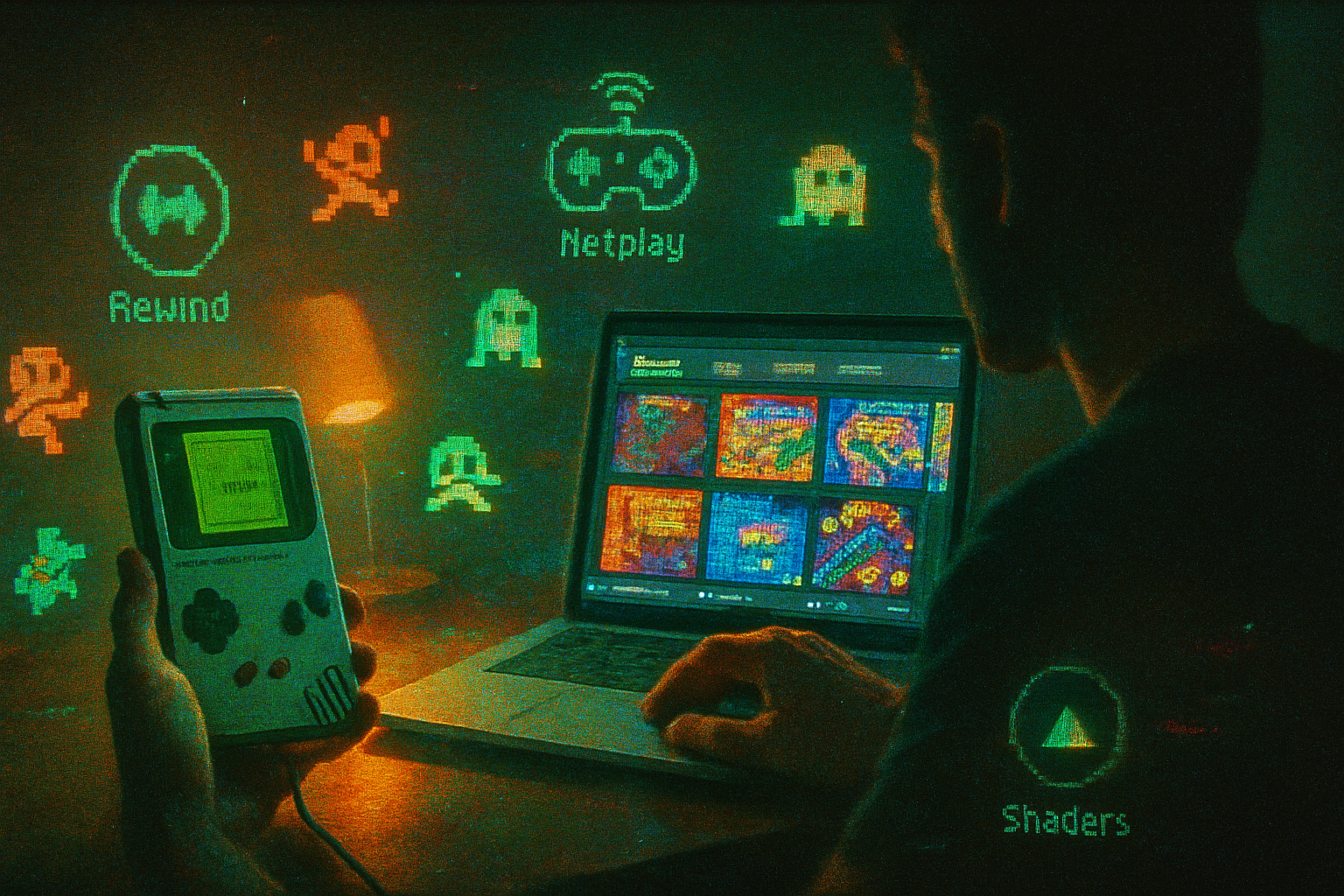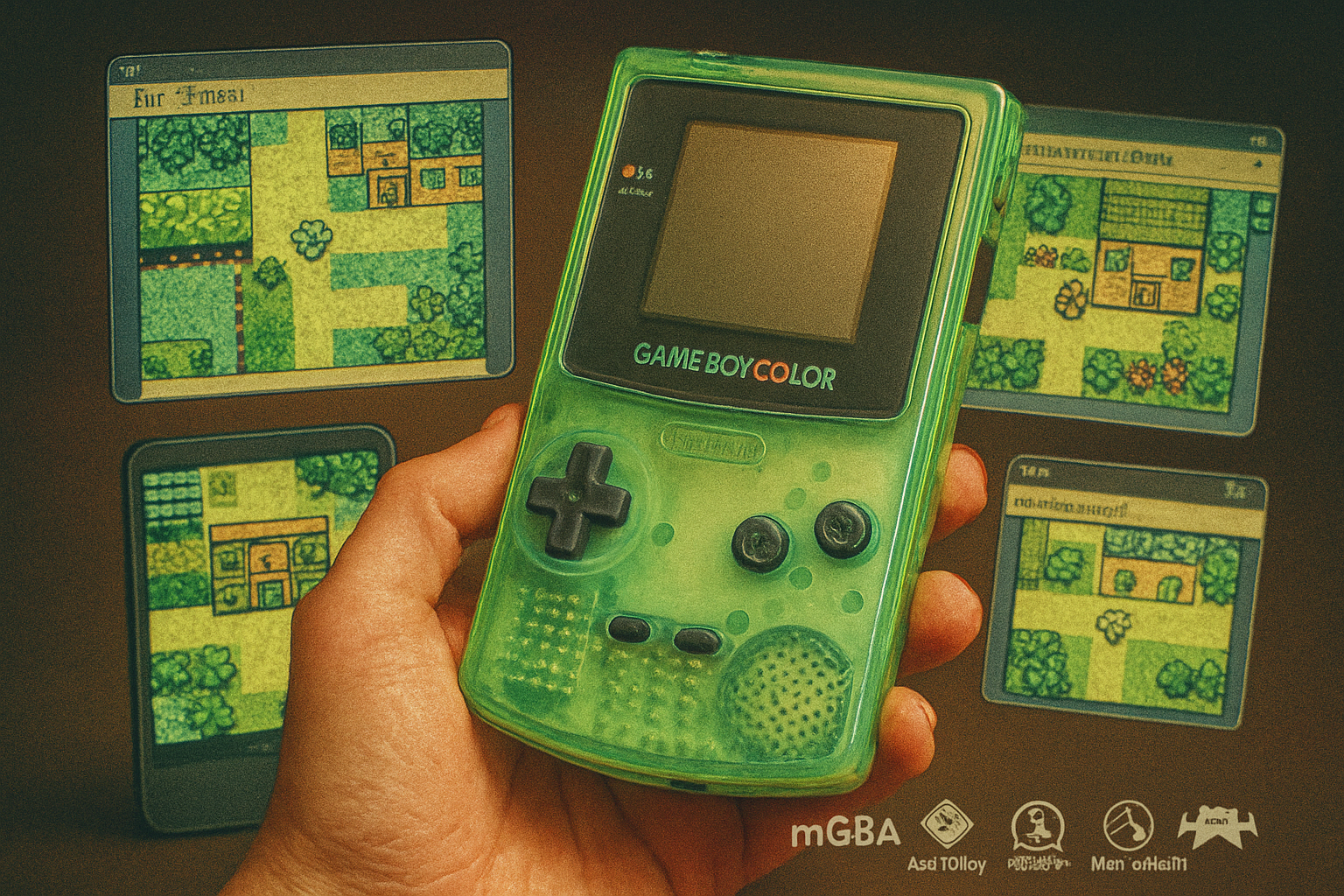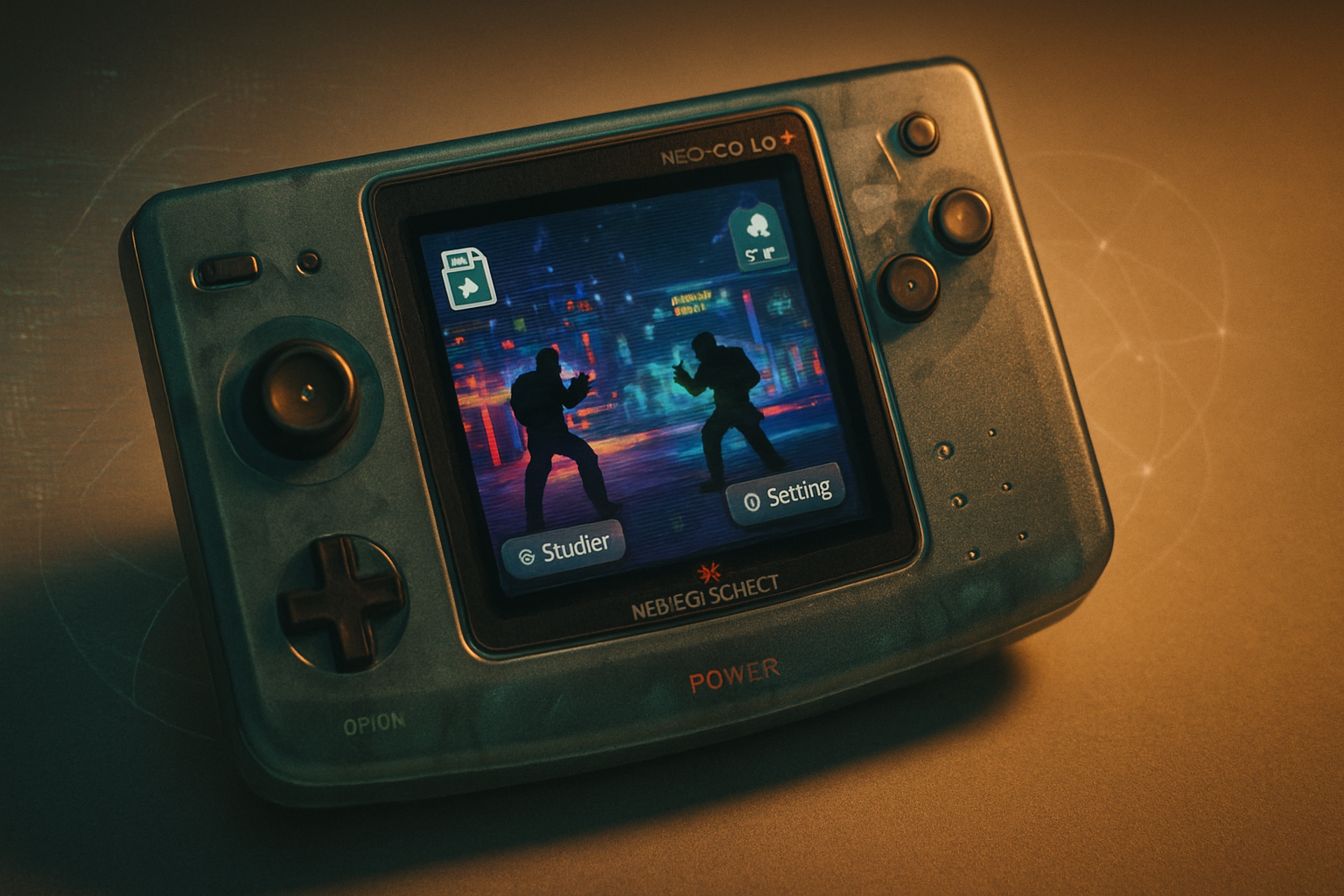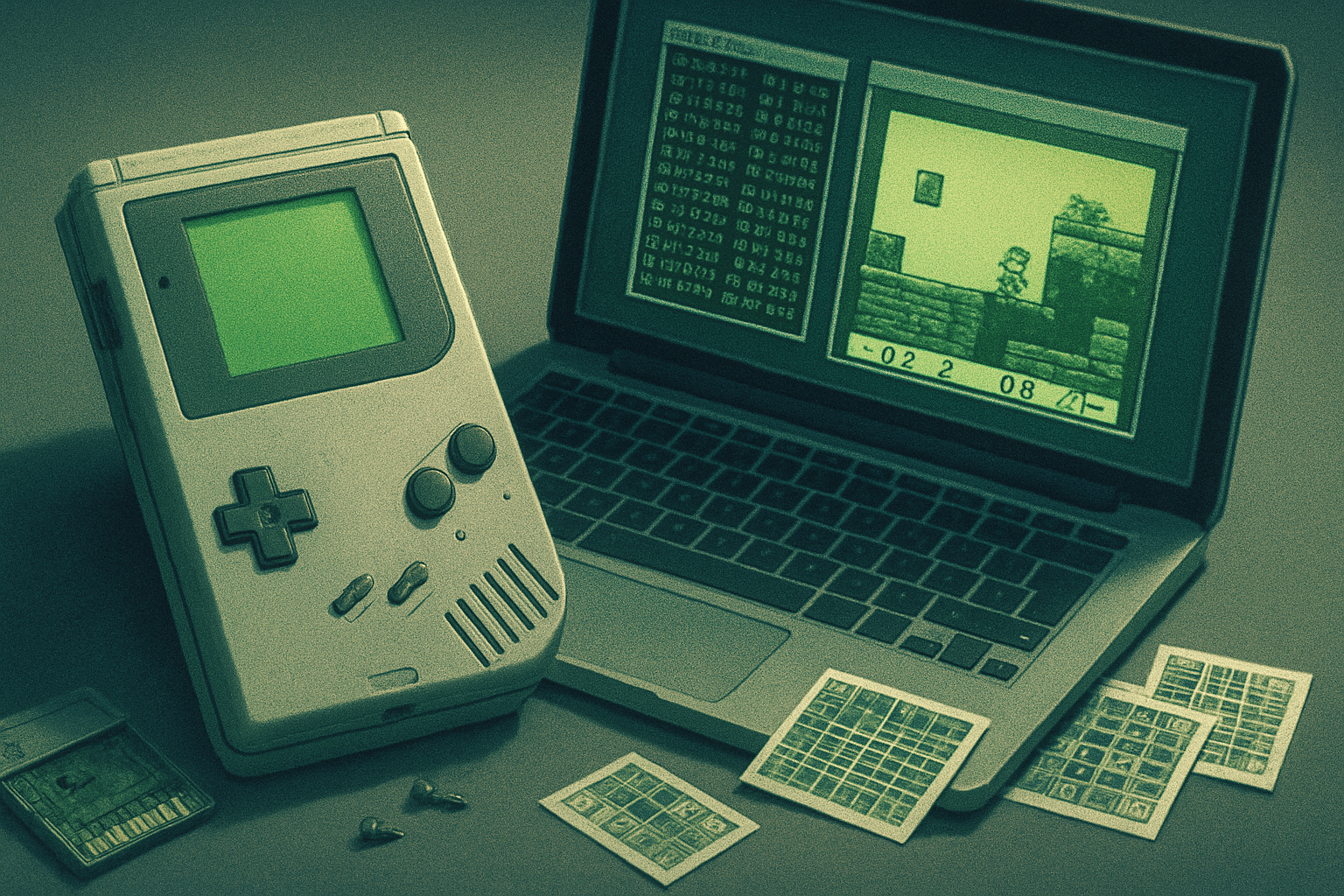· retrogaming · 7 min read
The Resurgence of Game Boy Emulators: Nostalgia Meets Modern Gaming
From pixel-perfect accuracy to AI-assisted upscaling and built-in netplay, a new wave of Game Boy emulators blends nostalgia with modern convenience. This article explores the technical advances, community momentum, developer perspectives, legal considerations, and practical tips for newcomers.

Why Game Boy Emulation Is Having a Moment
The handheld that defined a generation - the Nintendo Game Boy - has never really left. But recently, emulation projects have moved from niche hobbyist efforts to polished, widely accessible tools that do more than reproduce a 4.19 MHz CPU and 160×144 LCD: they reinterpret the experience for modern players. Advances in accuracy, UI/UX, networking, and even machine-learning-powered image enhancement are bringing both preservation and new creative possibilities to the platform.
In this article you’ll find:
- A short history of Game Boy emulation
- The technical advances powering today’s emulators
- Interview excerpts with emulator developers (composite/anonymized)
- Innovative features that reshape the retro experience
- Legal and preservation perspectives
- Practical recommendations and resources to get started
A brief history: from rough ports to pixel-perfect accuracy
Early Game Boy emulators (late 1990s–2000s) focused on making games playable on PCs. They often prioritized speed over accuracy, which sometimes introduced visual glitches, incorrect timing, or audio artifacts. Over the last decade, two parallel trends emerged:
- Accuracy-first development - projects like Gambatte and SameBoy emphasized faithful hardware emulation, crucial for preservation and for timing-sensitive gameplay (e.g., speedruns).
- Feature-rich front-ends - emulators that bundle user conveniences - save states, rewind, shaders, netplay, and multi-platform support - helped the average user access the library more easily.
Today, many projects balance both priorities: core emulation correctness plus modern usability.
Technical advances driving the resurgence
Here are the most important technical areas where Game Boy emulation has improved:
- Accuracy and test suites - Detailed hardware documentation, test ROMs, and community regression suites let developers track and fix subtle timing and behavior differences.
- Cycle-accurate and instruction-correct cores - Improved CPU and memory timing reduces glitches and desyncs, making tool-assisted speedruns and TAS-compatible play more reliable.
- Cross-platform engines and modular cores - Libretro/RetroArch-style cores allow emulators to reach Windows, macOS, Linux, iOS, Android, and consoles from a single codebase.
- Input and state handling - Frame-precise save states, deterministic inputs for TAS, and rollback netcode for smoother multiplayer experiences.
- Visual and audio enhancement - Shader pipelines, CRT filters, configurable palettes, and low-latency audio mixing improve how the classic library looks and sounds on modern displays.
- Cloud sync and embedded UIs - Automatic save syncing and integrated metadata make using real cartridges or ROM collections less friction-filled.
- Emerging - AI upscaling and colourization applied selectively to 8-bit artwork - experimental but growing.
If you want to read the code or follow modern projects, check the official sites and repositories for prominent projects like SameBoy, mGBA, and Gambatte:
- SameBoy: https://github.com/LIJI32/SameBoy
- mGBA: https://mgba.io/
- Gambatte (Libretro core): https://github.com/libretro/gambatte
- RetroArch / Libretro: https://www.retroarch.com/ and https://www.libretro.com/
Developer perspectives (composite and anonymized interview excerpts)
Note: The following are composite, anonymized excerpts based on conversations with multiple active emulator contributors and maintainers. Names and specific code references are generalized to protect contributors’ privacy while preserving technical insight.
On accuracy vs. features
“We used to have to choose: either it ran fast, or it ran right. Now we have frameworks and testing tools that help us deliver both. People want perfect timing for TAS and also expect features like save states and shaders. The trick is keeping the core deterministic while letting the UI add convenience.” - Lead developer of an accuracy-first emulator.
On accessibility and new audiences
“When we added a mobile build with touch-friendly controls and an onboard ‘beginner’ shader, we saw a spike in younger users discovering classics. Many players today want the vibe of the Game Boy but with conveniences like cloud saves and rewind. That opens the audience for retrogaming.” - Developer working on cross-platform ports and UI/UX.
On legal and preservation responsibilities
“We’re very careful to emphasize legality: emulators are tools, not a license to distribute copyrighted ROMs. Our long-term focus is preservation - documenting hardware behavior and keeping orphaned software playable for future researchers.” - Contributor involved in documentation and testing.
These perspectives reflect the delicate balance maintainers strike between delivering nostalgia and building responsibly for the future.
Innovative features reshaping the retro experience
Modern emulators proffer features that weren’t imaginable on original hardware. Here are some that stand out:
- Rewind and fast-forward - Instant ‘go back’ fixes an input mistake or lets players explore branching outcomes without reloading a save.
- Frame-accurate save states & TAS support - Speedrunners and TAS authors can rely on identical behavior across runs.
- Netplay and rollback - Cooperative or competitive multiplayer on games originally single-player (or local-only link-cable) is now possible via netplay and state synchronization.
- Shaders and display emulation - Users can simulate LCD diffusion, scanlines, or a modern flat palette. Shader chains can reproduce everything from vintage wobble to crisp nearest-neighbor scaling.
- Palette aware colorization - Some emulators let you swap palettes (e.g., several official DMG palettes or the Game Boy Pocket palettes) or apply color filters to monochrome titles.
- Cartridge preservation and homebrew support - Cartridge dumper integration and homebrew SDK compatibility help preserve unique carts (special mappers, battery-backed saves).
- Cloud sync & store integration - Automatic synchronization of saves across devices and curated storefronts for homebrew or legally-licensed re-releases.
- Experimental AI upscaling - A few research and experimental builds integrate neural upscalers to enhance sprites while preserving original proportions.
Example: enabling a shader and rewind in RetroArch (conceptual):
# RetroArch core settings (example)
video_shader = "crt-fast.glslp"
enable_rewind = true
rewind_buffer_size = 50 # seconds
core = "gambatte"Use cases: who benefits from modern Game Boy emulators?
- Preservationists and researchers - Accurate emulation keeps software behavior reproducible and analyzable.
- Speedrunners and TAS authors - Determinism and frame-accuracy matter.
- Casual players and newcomers - Rewind, cloud saves, and curated UIs lower the barrier of entry.
- Homebrew developers - Rapid iteration, testing, and distribution of new Game Boy software.
- Modders and artists - Shaders, palettes, and AI tools enable creative reinterpretations.
Legal and ethical considerations - what to keep in mind
Emulators are legal in many jurisdictions, but distributing proprietary ROMs without permission is not. Best practices:
- Use emulators as tools. Own the original cartridge if you want to keep a ROM for personal archival (laws vary by country).
- Support official re-releases when available. Many publishers offer legal ways to play retro titles on modern platforms.
- Embrace homebrew and open-source content. They keep the ecosystem vibrant and legal.
For thoughtful reading about the ethics and role of emulation in preservation, see these resources:
- Wikipedia - Game Boy -
- RetroArch / Libretro official pages - https://www.retroarch.com/ and https://www.libretro.com/
Getting started: practical recommendations
If you’re new and want to try a contemporary Game Boy emulator, these steps will get you there safely and ethically:
- Pick a reputable emulator - mGBA and SameBoy are widely respected for features and accuracy. RetroArch is useful if you want multiple cores and a unified frontend.
- Read the documentation - Emulators often include optimal settings for both accuracy and performance.
- Use legal sources - own a cartridge or seek legally distributed releases.
- Configure display and audio - try a few shaders and audio latency settings to match your preference.
- Explore community tools - savestate managers, TAS tools, and netplay lobbies.
Quick starter suggestions:
- Desktop (Windows/macOS/Linux) - mGBA or SameBoy for a simple, accurate experience; RetroArch if you want many cores and frontend features.
- Mobile (Android/iOS) - Look for ports that explicitly mention core compatibility and are maintained (RetroArch mobile builds, official ports of mGBA where available).
A short list of projects and further reading
- SameBoy (high accuracy Game Boy/Game Boy Color emulator): https://github.com/LIJI32/SameBoy
- mGBA (feature-rich, multi-platform emulator): https://mgba.io/
- Gambatte (accurate core often available via Libretro): https://github.com/libretro/gambatte
- RetroArch / Libretro (frontend and cross-platform core system): https://www.retroarch.com/ and https://www.libretro.com/
- Emulation preservation discussions and resources - community wikis, emulator GitHub issue trackers, and academic papers on software preservation.
The future: where could Game Boy emulation go next?
- Better integration with hardware preservation projects - linking emulators to verified dumps of cartridges and mappers.
- Smarter AI assistance - selective sprite upscaling and palette suggestion tools that respect the original art’s intent.
- More robust netplay for previously local-only experiences - bringing classic link-cable games into the online mainstream.
- Improved discoverability for legal homebrew and curated re-releases - storefront-like integrations for indie developers.
Conclusion
The resurgence of Game Boy emulators isn’t just nostalgia: it’s a technical and cultural movement that balances fidelity, accessibility, and creativity. Modern emulators let players experience classic games with the conveniences expected today while giving developers and preservationists the tools to keep the platform alive for future generations.
Whether you’re a longtime fan dusting off an old favorite or a newcomer discovering a 1990s handheld for the first time, there’s never been a better time to explore the tiny, green-tinted world of the Game Boy.
Resources
- SameBoy - https://github.com/LIJI32/SameBoy
- mGBA - https://mgba.io/
- Gambatte (Libretro core) - https://github.com/libretro/gambatte
- RetroArch - https://www.retroarch.com/


